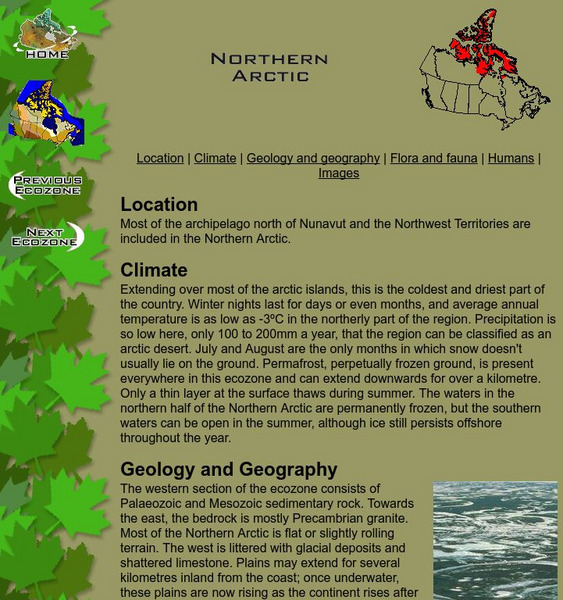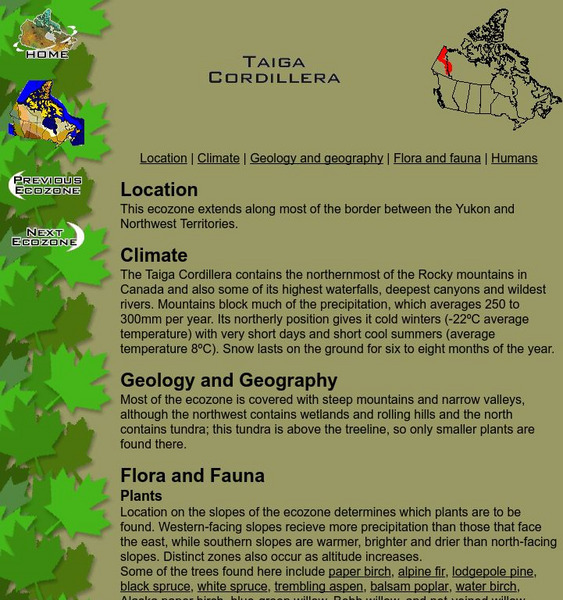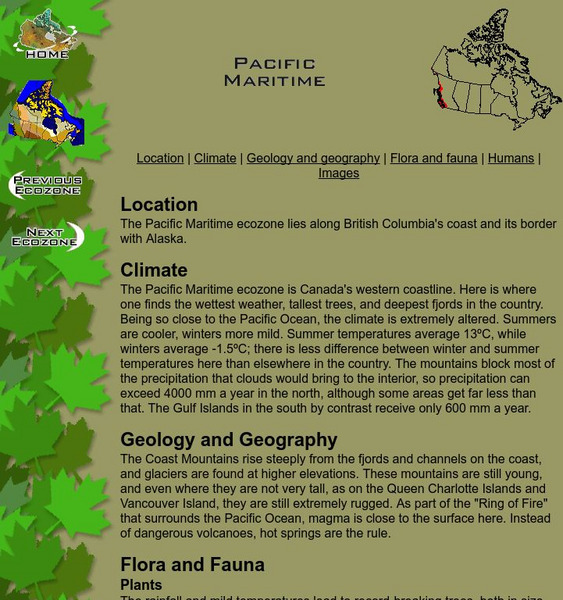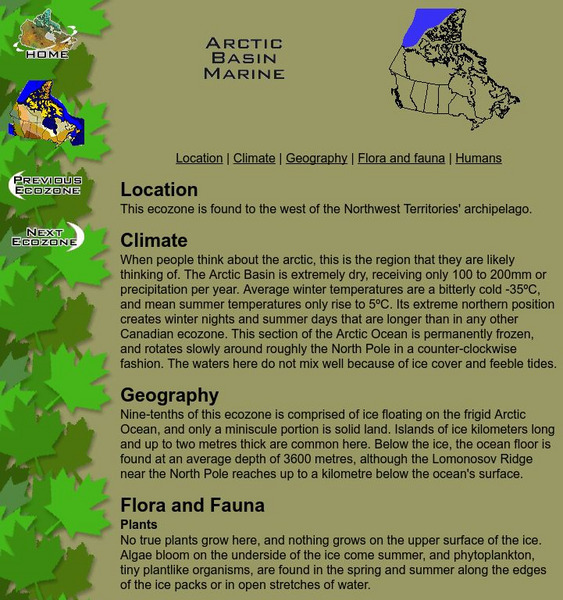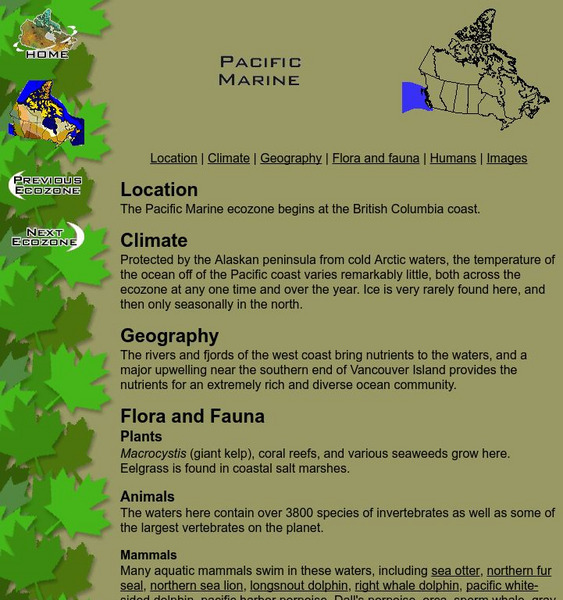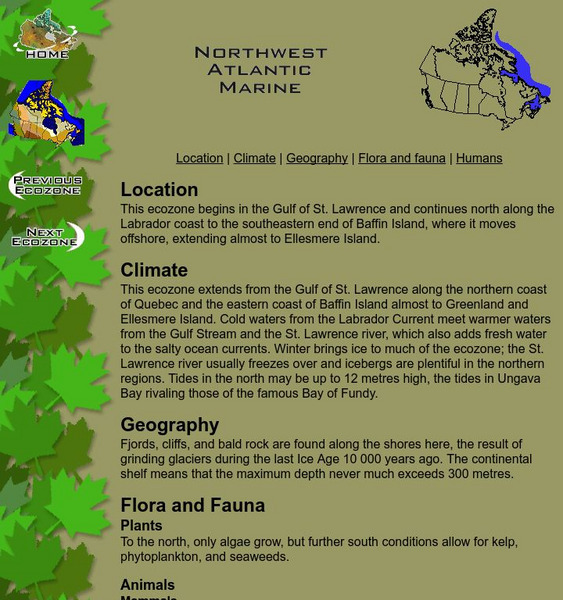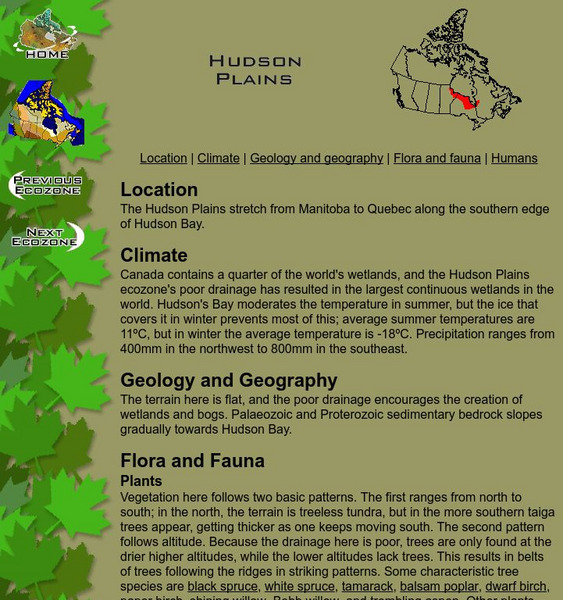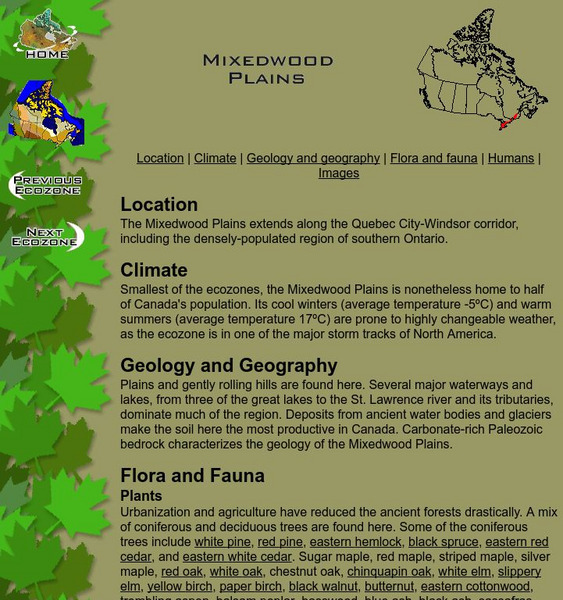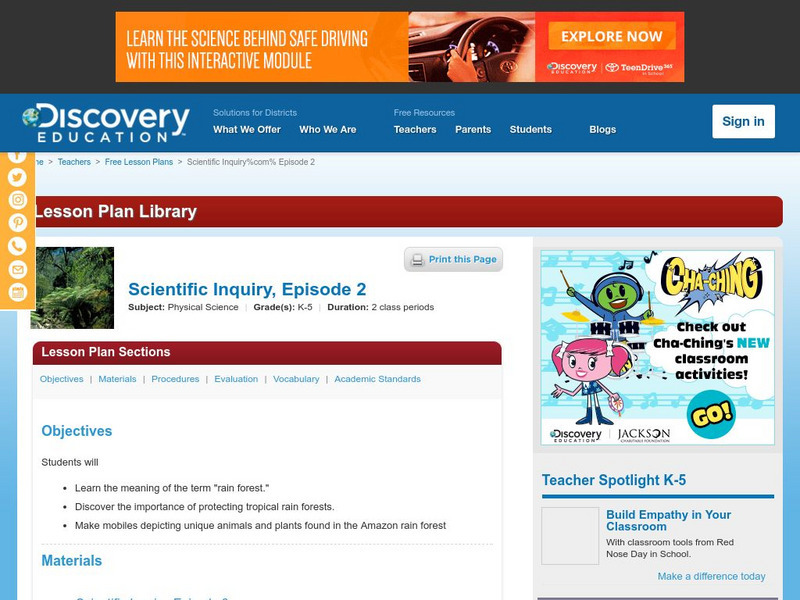Other
My Science Box: Ecosystem Organization
In this lesson, learners will learn about the different levels in the hierarchy of ecology and explain the relationships: organism, population, community, ecosystem, biome, and biosphere. They will also discover why different regions...
TeachEngineering
Teach Engineering: Environments and Ecosystems
Learners explore the biosphere and its associated environments and ecosystems in the context of creating a model ecosystem, learning along the way about the animals and resources. Students investigate different types of ecosystems, learn...
National Institute of Educational Technologies and Teacher Training (Spain)
Ministerio De Educacion: Los Seres Vivos Y El Medio Ambiente
What is ecology? What is a biome? You will find the answers to these questions in this unit and also learn about the organization of the Biosphere, major Biomes of the earth and the adaptations of living things to limiting factors. It...
Science Struck
Science Struck: The 6 Chief Levels of Organization in Ecology
Describes six levels of organization in the biological world - individual species, population, community, ecosystem, biome, and biosphere.
TeachEngineering
Teach Engineering: Go With the Energy Flow
Students learn about energy and nutrient flow in various biosphere climates and environments. They learn about herbivores, carnivores, omnivores, food chains and food webs, seeing the interdependence between producers, consumers and...
CK-12 Foundation
Ck 12: Plix: Ecosystems: Where Do the Items Belong?
[Free Registration/Login Required] In this interactive you will need to organize the labels according to where they belong in the biosphere. You will need a sign-in to access this media, but it will be well worth your time!
CK-12 Foundation
Ck 12: Biology: Organization of Living Things
[Free Registration/Login may be required to access all resource tools.] How organisms are organized.
McGill University
Mc Gill University: Canadian Biodiversity: Ecozones: Boreal Cordillera
This Boreal Cordillera contains the mountains of the southern Yukon and northern British Columbia . This brief, concise description includes a collection of images of the animals and birds native to the location. Many of the images...
McGill University
Mc Gill University: Canadian Biodiversity: Ecozones: Northern Arctic
A brief, concise description of the chain of islands that form most of the archipelago north of Nunavut and the Northwest Territories. It includes an excellent collection of images of the landscape as well as those of animals and birds...
McGill University
Mc Gill University: Canadian Biodiversity: Ecozones: Boreal Shield
The Boreal Shield runs from Alberta to Newfoundland. This is a brief, concise description of the location, climate, geology and flora and fauna. It includes a collection of images of the landscape as well as those of animals and birds...
McGill University
Mc Gill University: Canadian Biodiversity: Ecozones: Taiga Cordillera
The Taiga Cordillera extends along the border of the Yukon and Northwest Territories. This is a brief, concise description of the location, climate, geology and flora and fauna. It includes a collection of images of the landscape as well...
McGill University
Mc Gill University: Canadian Biodiversity: Ecozones: Pacific Maritime
The Pacific Maritime ecozone lies along the British Columbia coast and it's border with Alaska. This is a brief, concise description of the location, climate, geology and flora and fauna. It includes a collection of images of the...
McGill University
Mc Gill University: Canadian Biodiversity: Ecozones: Montane Cordillera
The Montane Cordillera covers most of southern British Columbia and some of southwestern Alberta. This is a brief, concise description of the location, climate, geology and flora and fauna. It includes an excellent collection of images...
McGill University
Mc Gill University: Canadian Biodiversity: Ecozones: Arctic Basin Marine
The Arctic Basin Marine ecozone is found to the west of the Northwest Territories archipelago. This brief, concise description includes a collection of images of the animals and birds native to the location. Many of the images include...
McGill University
Mc Gill University: Canadian Biodiversity: Ecozones: Pacific Marine
The Pacific Marine ecozone begins at the British Columbia Coast. This is a brief, concise description of the location, climate, geology and flora and fauna. It includes some images of the animals and birds native to the location. Many of...
McGill University
Mc Gill University: Canadian Biodiversity: Ecozones: Northwest Atlantic Marine
The Northwest Atlantic Marine ecozone begins in the Gulf of St. Lawrence and extends to the southeastern end of Baffin Island. This is a brief, concise description of the location, climate, geology, and flora and fauna. It includes some...
McGill University
Mc Gill University: Canadian Biodiversity: Ecozones: Arctic Archipelago Marine
The Arctic Archipelago Marine ecozone includes Hudson Bay and most of the water surrounding the islands of Nunavut and the Northwest Territories. This is a brief, concise description of the location, climate, geology, and flora and...
McGill University
Mc Gill University: Canadian Biodiversity: Ecozones: Hudson Plains
The Hudson Plains ecozone stretches from Manitoba to Quebec along the southern edge of the Hudson Bay. This is a brief, concise, description of the location, climate, geology and flora and fauna. It includes a collection of images of the...
McGill University
Mc Gill University: Canadian Biodiversity: Ecozones: Mixedwood Plains
This Mixedwood Plains ecozone extends along the Quebec City- Windsor corridor and the densely-populated region of Southern Ontario. This brief, concise description includes a collection of images of the animals and birds native to the...
Other
Open2.net: Ecosphere
Designed by the Open University and the BBC, this website from Open2.net explores ecosystems. Included is a lengthy discussion on closed ecosystems and their importance to research, as well as a virtual ecosystem, an interactive showcase...
Discovery Education
Discovery Education: Scientific Inquiry, Episode 2
A project where students research and learn about animals of the rainforest. Students then make mobiles displaying several different animal pictures and facts.







